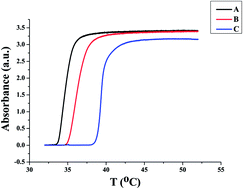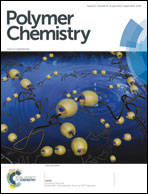Electrospun glycopolymer fibers for lectin recognition†
Abstract
The thermoresponsive glycopolymers poly-(N-isopropylacrylamide-co-6-O-vinyladipoyl-D-glucose) (poly-NIPAM-co-OVDG; PND) and poly-(N-isopropylacrylamide-co-6-O-vinylazelaicoyl-D-glucose) (poly-NIPAM-co-OVZG; PNZ) have been prepared by a free radical polymerization process, and subsequently processed into blended fibers with poly-L-lactide-co-ε-caprolactone (PLCL) using electrospinning. The fibers were found to inhibit the non-specific adsorption of bovine serum albumin onto their surfaces, but could selectively recognize the lectin Concanavalin A (Con A). The adsorbed Con A can easily be desorbed with a glucose solution. The synthesized fibers were found to have excellent biocompatibility with HeLa cells using the MTT assay, but when loaded with Con A could be used to induce death in the cell population.


 Please wait while we load your content...
Please wait while we load your content...